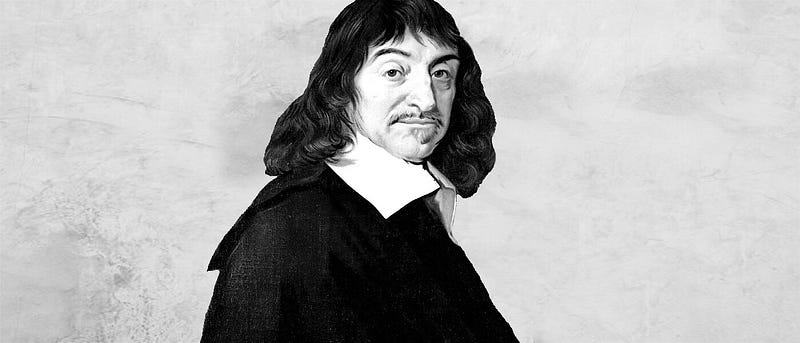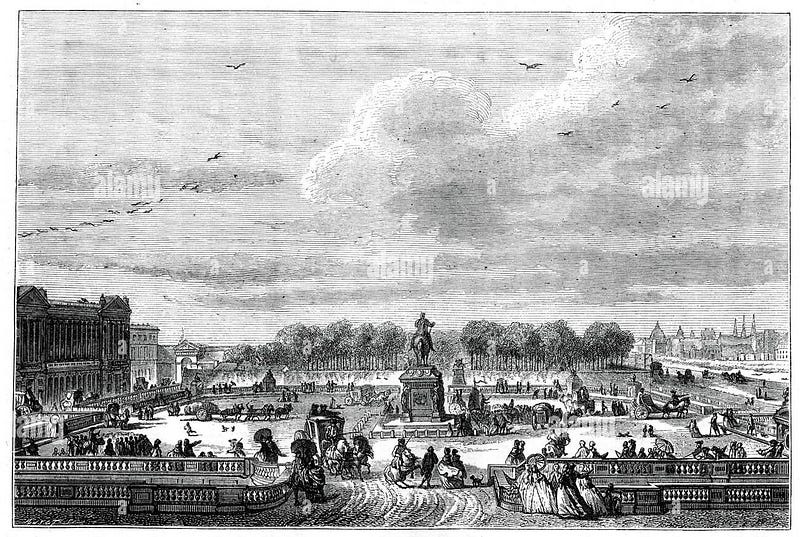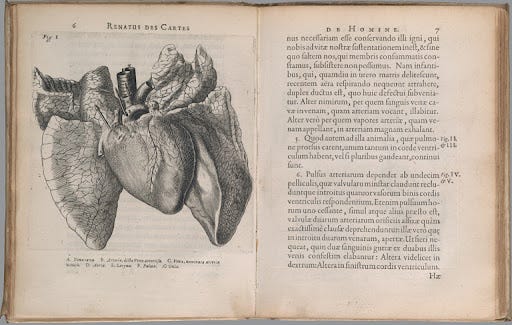In this machine resides a soul endowed with reason
A deep dive into the philosophical roots of humanity
The concept of the separation of mind and body dates back to ancient Greek times and Plato, but it was René Descartes (1596–1650) who first closely examined their relationship.

His first philosophical work, De Homine — “On Man” — describes the dualism of mind and body: the immaterial mind, or “soul,” he states, resides in the pineal gland, the seat of thought, while the body is a kind of machine moved by “animal spirits” or bodily fluids circulating through the nervous system to control movement.

This idea had been popularized in the 2nd century by Galen, who linked it to his theory of humors, but Descartes was the first to describe it in detail and emphasize the separation between body and mind.

In a letter to the philosopher Martin Mersenne, Descartes explains that the pineal gland, the seat of thought, must also be that of the soul, as they are inseparable. This point is crucial because it alone allows connecting the soul to a solid part of the body, not just to pure spirits.
Descartes envisioned the interactions of mind and body through the consciousness of “animal spirits” circulating in the body. He believed that the mind, or soul, with its seat deep in the brain, in the pineal gland, could become aware of these mobile spirits, resulting in sensations. Thus, the body influenced the mind. The reverse was also true, as the influx of “animal spirits” to a specific body area translated into action.

The Soul Like a Fountain
Drawing inspiration from the gardens of the French kings with their irrigation systems and sophisticated fountains, Descartes compared the body’s spirits commanding nerves and muscles to the force of water: the former moved all limbs, the latter various machines.
These fountains are controlled by a fountain keeper, which provides Descartes with a comparison element for the mind: “And finally, when the reasonable soul will be in this machine, it will have its principal seat in the brain, and will be there like the fountain keeper, who must be in the places where all the pipes of these machines come together when he wants to stimulate, prevent, or change their movements in any way.”

While philosophers still debate whether the mind and the brain are two separate entities, most psychologists equate the mind with brain activity. In practical terms, however, the distinction between physical health and mental health is more complex than it seems: the two are closely linked, as stress can impact physical well-being, and a chemical imbalance can affect the brain.
Who was René Descartes?
Born in La Haye, Touraine, into a family of minor nobility, René Descartes entered the Jesuit College of La Flèche at ten, where, due to his frail health and exceptional talents, he enjoyed special treatment without morning classes. A mathematics enthusiast, he earned a law degree in Poitiers and moved to Paris.
At the onset of the Thirty Years’ War, he spent a year in the army of Duke Maximilian of Bavaria, then dedicated himself to study sciences. Traveling through Europe and France, mingling with scholarly circles, he settled in Holland in 1628 to write his philosophical and mathematical reflections.

Invited by Queen Christina of Sweden in 1649, he died in Stockholm on February 11, 1650. Officially, he succumbed to pneumonia, but some claimed he had been poisoned as there were fears he might dissuade the queen from converting to Catholicism.

Summary of Descartes’ Theory
- The soul (mind) and the body are distinct. - The soul is immaterial but “resides” in the pineal gland of the brain. - The body is a material mechanical machine. - The soul controls the physical body by circulating “animal spirits” through the nervous system.
